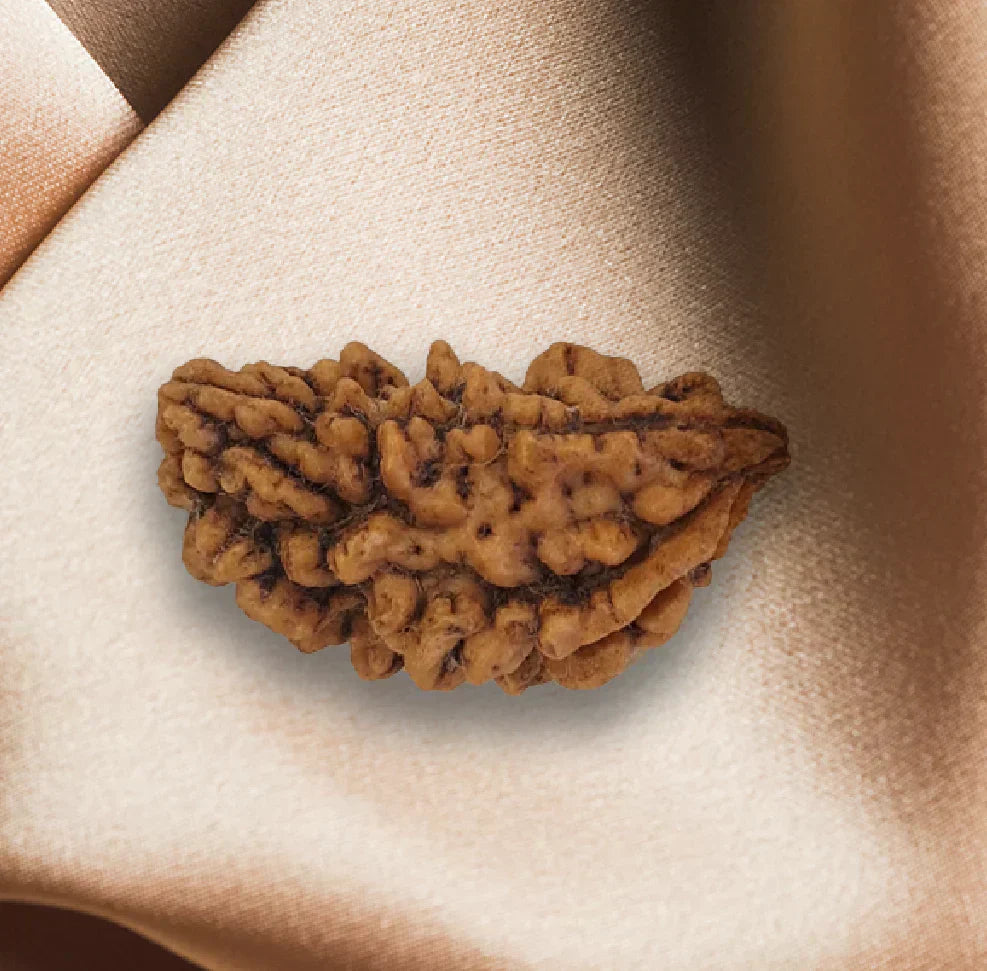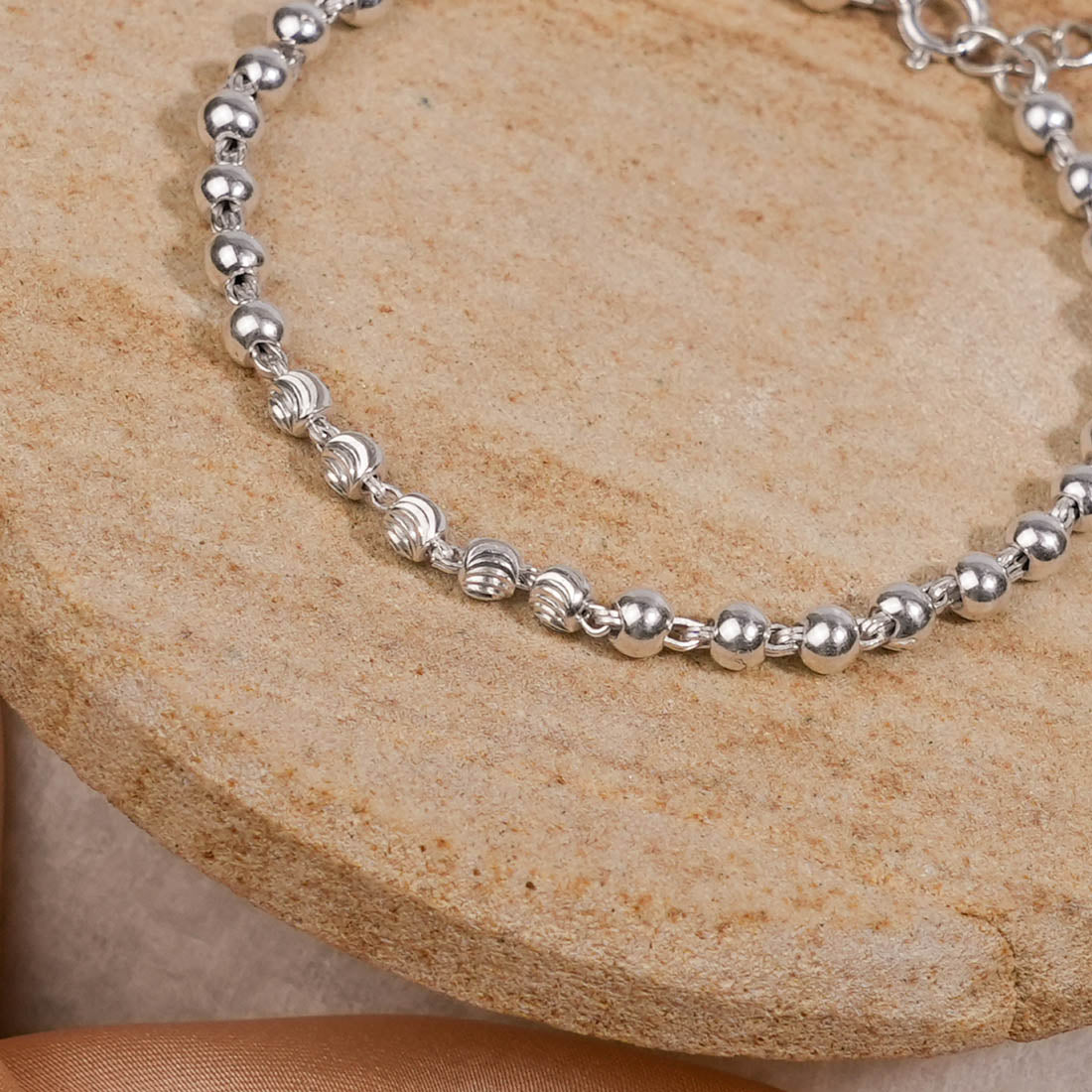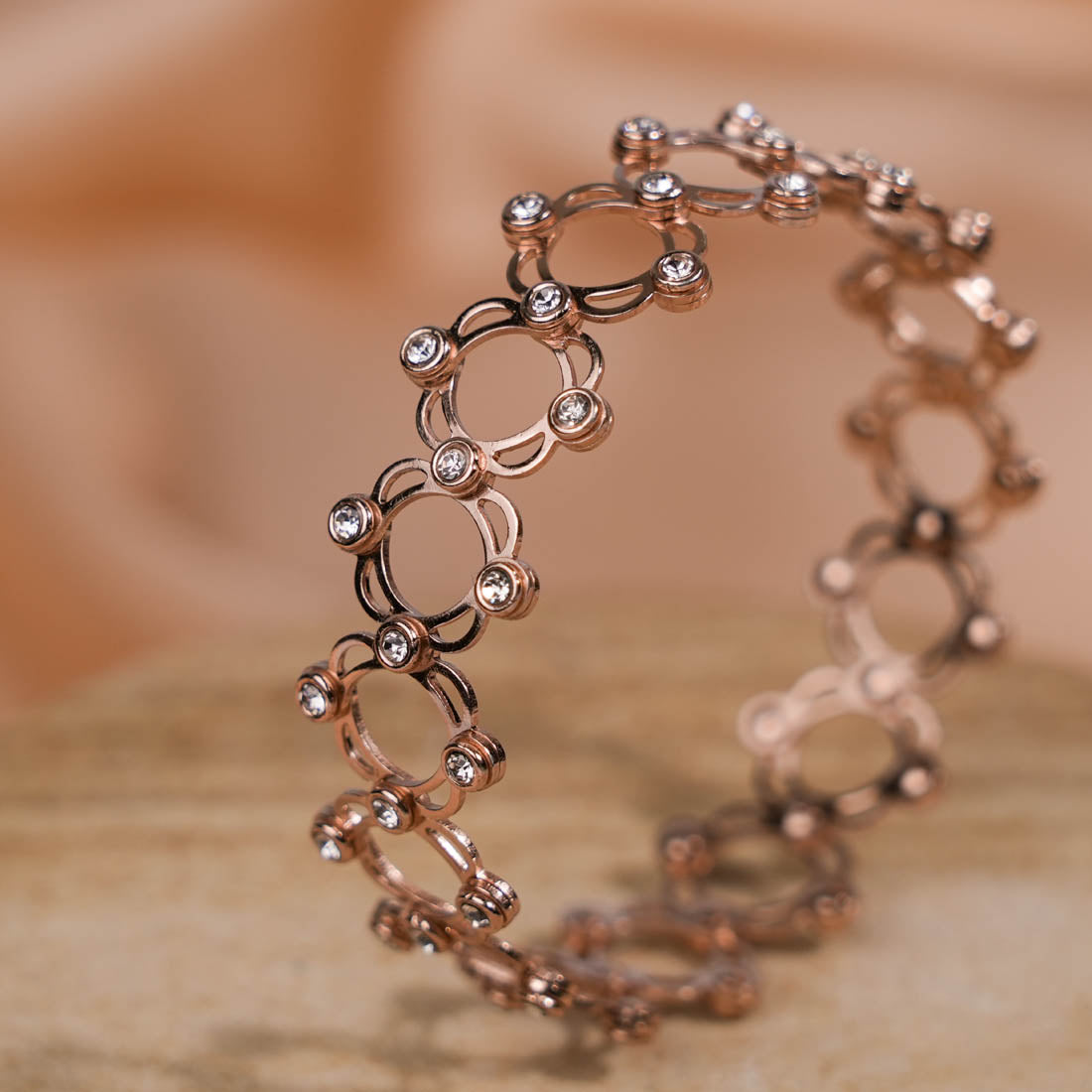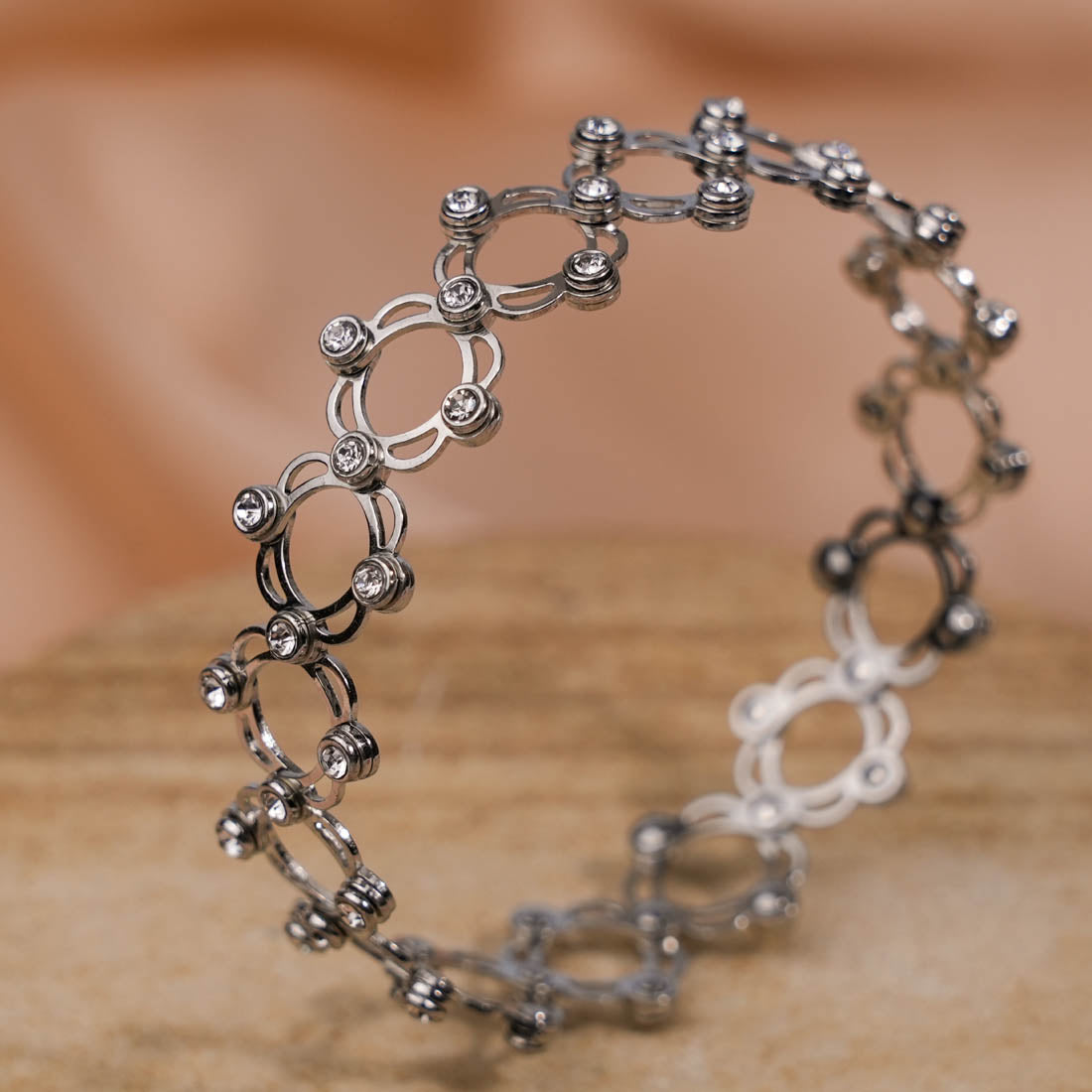
Rudraksha Jewelry
How to Identify Orignal Rudraksha?
How to Identify Orignal Rudraksha?
Rudraksha beads are natural seeds that come from the Elaeocarpus Ganitrus tree. In Hinduism, they’re considered very sacred and are often used while praying or meditating. Each bead is believed to hold special energy, which is why it's important to make sure you're using a real one.
These days, many fake or modified rudraksha beads are being sold in the market. So how do you know if the one you have is original?
In this blog, we’ll walk you through:
-
What a real rudraksha looks like,
-
Simple tests people use to check if it's genuine (and which ones you shouldn’t fully trust),
-
Common types of fake rudraksha, and
-
Easy tips to buy the right one.
Keep scrolling!
How to Recognize a Real Rudraksha by Its Appearance
A real rudraksha has some natural signs that help you tell it apart from a fake one. Let’s look at them one by one.
1. Lines or Mukhis:
Each rudraksha has vertical lines on its surface, called mukhis. These lines run from top to bottom and divide the bead into sections.
For example:
-
A 5-mukhi rudraksha will have five straight, deep grooves.
-
These lines are not scratched or carved, they are naturally formed.
-
Inside the bead, there are seed chambers, and the number of chambers usually matches the number of lines on the surface.
Also, you’ll usually find a small natural hole going through the center of the bead. This is where it was attached to the tree. If the hole looks very smooth or perfectly drilled, it may not be real.
2. Weight and Feel:
A genuine rudraksha feels like dry wood, solid, but not too heavy.
-
It shouldn't feel too light or hollow.
-
If you drop it in water, it usually sinks. (But this isn’t a foolproof test.)
3. Surface Texture:
Real rudraksha beads have a rough and uneven surface.
-
They feel a little spiky or bumpy when you touch them.
-
No two sections look exactly the same.
-
Small natural holes or marks on the surface are common and nothing to worry about.
4. Natural Color:
Original rudraksha beads usually come in shades of:
-
Light brown
-
Reddish brown
-
Deep brown
If the bead looks too shiny or has a very bright red color, it could be dyed or polished to look better, and that’s a red flag.
5. Origin and Size:
-
Nepal rudrakshas are bigger in size, with darker and deeper grooves.
-
Java (Indonesia) rudrakshas are smaller, with finer lines.
Both are natural and authentic, they just grow in different regions. So don’t judge based only on size. Now let’s talk about other methods…
Traditional Ways to Check if a Rudraksha is Real
Over the years, people have shared many home based tricks to test whether a rudraksha is real. While these methods are popular and easy to try, they are not 100% reliable.
Some may help you spot an obvious fake, but none of them can guarantee that a bead is truly original.
1. Water Test (Float or Sink)
This is the most well known test. The idea is simple, a real rudraksha will sink in water, while a fake one (like plastic or light wood) will float.
Yes, there’s some truth to this:
-
Real rudraksha is dense and usually sinks.
- But sometimes, a real bead that hasn’t dried fully, or is from a lighter variety, may float.
Use this test only as a first step. If a bead floats, it’s probably fake, but if it sinks, that still doesn’t prove it’s real.
2. Copper Coin Test
Some people say if you place a rudraksha between two copper coins and gently press or move it, a real one will start to rotate. They believe it happens because of the bead’s energy or magnetism.
But here’s the truth:
-
Even a fake bead or a random seed can spin like that.
-
The spinning happens because of the bead’s round shape and rough surface, not because of any special power.
- It’s just simple physics, not a magic test.
3. Milk Test
This test says that if you put a real rudraksha in a glass of milk, the milk won’t spoil for days. Sounds magical, right? But in reality:
-
There’s no scientific proof behind it.
-
Milk will go bad as usual, whether or not the bead is inside.
-
If it stays fresh, it’s likely because it was boiled or kept cold, not because of the rudraksha.
In short, this test is just a belief, not a trusted way to check originality.
4. Boiling Test
This method is less common. People boil the rudraksha in water for an hour or two to see if it’s made of glued pieces.
The idea is:
-
If it’s a fake made by gluing parts together, the glue might melt and show signs of tampering.
-
You might see colored glue lines or small gaps.
However:
-
Boiling a rudraksha can damage it, especially if it’s genuine.
-
Smart fakes use strong glue that won’t melt easily.
Not recommended for regular buyers. Only try this if you’re okay with possibly ruining the bead.
So, do these tests really work?
Some of them can catch obvious fakes, like:
-
A bead that floats in water,
-
A plastic one that feels too smooth or too light.
But these methods cannot confirm a high-quality fake or a cleverly tampered bead.
The most reliable way to test a rudraksha is through X-ray or lab testing, which shows what’s inside the bead and confirms the number of natural segments.
Tip: Use a combination of checks, how it looks, feels, and behaves…but don’t depend only on traditional tests. They can help, but they’re not the full proof.
Common Fake Rudrakshas in the Market
Sadly, the rudraksha market also has its share of fake and tampered beads. Many sellers try to cheat buyers by selling look-alikes that may seem real at first glance. But if you know what to look for, you can easily avoid getting fooled.
Here are the most common types of fake rudraksha beads and how to identify them:
1. Plastic or Resin Rudrakshas
These are cheap, mass-produced beads made from plastic or resin.
How to spot them:
-
They feel very lightweight and sometimes have a shiny or glossy finish.
-
You may notice mold lines or repeated patterns, real rudrakshas never look exactly the same.
-
The “mukhi” lines may look too perfect or evenly spaced, like a machine made them.
-
They float in water (unless filled with something heavy).
-
They feel smooth and artificial, not woody or natural.
Always trust your touch and eyes, real rudraksha feels natural, rough, and slightly heavy for its size.
2. Wooden Beads or Other Seeds
Sometimes sellers use betel nuts (areca nuts) or other round seeds and carve lines on them to make them look like rudrakshas.
What to check:
-
These fakes are often softer and smoother than real rudrakshas.
-
The central hole may look too large or badly drilled.
-
The surface may feel more like fibrous wood instead of hard seed shell.
If the texture feels different or too soft, it’s likely not real.
3. Carved or Altered Rudraksha (Fake Extra Mukhis)
Some sellers take a lower-mukhi rudraksha and carve extra lines into it to make it look like a rare high-mukhi bead.
What to look for:
-
The extra lines may look cut with tools, straighter, deeper, or unnatural.
-
They may not run properly from top to bottom.
-
Under a magnifying glass, you might see inconsistent grooves.
- X-ray tests can reveal fewer internal chambers than the lines on the outside.
4. Glued or Joined Beads (Composite Fakes)
These are some of the trickiest fakes. Sellers glue two or three rudraksha beads together to copy rare types like:
-
Gaurishankar (2 beads naturally joined)
-
Trijuti (3 beads fused naturally)
-
Or even the mythical round one-mukhi (which doesn’t exist naturally)
How they fake it:
-
They glue pieces together or fill lines with paste to hide the actual mukhi count.
-
They may even add a fake stem to make it look real.
How to catch it:
-
Look for glue marks, color mismatches, or uneven joints.
-
Check for places where lines suddenly end or look filled in.
-
Even if it passes a casual look, an expert or microscope can spot the tampering.
Be extra careful with “rare” types sold at low prices, they’re often fake.
5. Beads with Carved Symbols or Shapes
If you see a rudraksha bead with clear symbols like:
-
Om (ॐ)
-
Trishul (trident)
-
Snake
-
Or any other carved design
…it’s most likely man-made.
While natural marks can sometimes appear by chance, a clean, perfect symbol is almost never natural. These are made to impress buyers and sold at higher prices.
Knowing these tricks can save you from wasting money and help you find a bead that is truly authentic and spiritually valuable.
Smart Tips to Buy a Real Rudraksha
Buying a genuine rudraksha doesn’t have to be difficult, you just need to know what to look for and where to buy from. Here are some simple tips that will help you choose the right bead with confidence:
1. Buy from Trusted Sellers
Always buy from sellers who are known and have a good reputation.
-
Look for spiritual stores or online shops with good reviews and a long history. You can visit prinjal rudraksha for that…
-
Trusted sellers will answer your questions clearly and often allow returns if needed.
-
Stay away from roadside vendors or unknown online sellers offering rare rudrakshas at very low prices, if it sounds too good to be true, it probably is.
2. Ask for a Certificate
Genuine rudraksha sellers usually offer a certificate of authenticity.
-
This can come from a lab or expert who tests the bead using X-ray or microscope.
-
An X-ray test is the most accurate, as it shows how many internal chambers the bead has (which should match the number of mukhi lines).
-
Make sure the certificate is from a reliable source, some fake sellers also create fake certificates!
-
If possible, get the testing done in front of you or from a lab you trust.
A good seller won’t hesitate to show the proof. Like prinjal.
3. Check the Bead Yourself
Don’t be shy to examine the rudraksha closely before buying.
-
Make sure the mukhi lines are clear and unbroken from top to bottom.
-
Use a magnifying glass to spot tool marks, glue lines, or any signs of tampering.
-
Look at the hole, it should be small, natural, and centered. A very large or off-center hole may be a red flag.
-
Touch the bead, it should feel hard, woody, and textured, not smooth or plasticky.
If anything feels off or unusual, it’s better to double check.
4. Ask About Its Origin and Type
Talk to the seller and ask where the rudraksha came from, Nepal, Java, or somewhere else.
-
A genuine seller will know the type, mukhi count, and region.
-
For beads that are often faked (like the one-mukhi), the seller should clearly explain what's real and what’s not.
-
For example, round one-mukhi rudrakshas don’t exist in nature, so if someone is selling one, it’s a big warning sign.
Asking questions helps you stay informed and makes it harder for a fake seller to fool you.
5. Prefer Sellers Who Offer Live Testing
Some well-known shops may let you:
-
See the X-ray report in person,
-
Use a microscope to inspect the bead,
-
Or even do a simple water weight test to show the bead is solid inside.
The more transparent the seller is, the more likely the bead is real.
6. Be Careful with Very Cheap Prices
Rare or high-mukhi rudrakshas naturally cost more. If you find:
-
A 14-mukhi rudraksha at a super cheap rate,
-
Or someone offering rare beads at a huge discount,
…then it’s time to be cautious.
Extremely low prices usually mean something is wrong, either it’s fake, altered, or of poor quality.
7. Trust Your Gut Feeling
At the end of the day, your own instinct matters too.
-
If the bead’s look, story, or seller feels shady, it’s okay to walk away.
-
A real rudraksha brings peace, so the buying process should also feel peaceful and clear, not stressful or confusing.
Final Thought:
Take your time, ask questions, and stay informed.
A real rudraksha is not just a spiritual item, it’s a part of your personal journey. When you buy it with care and awareness, you can wear it with full faith and confidence.



